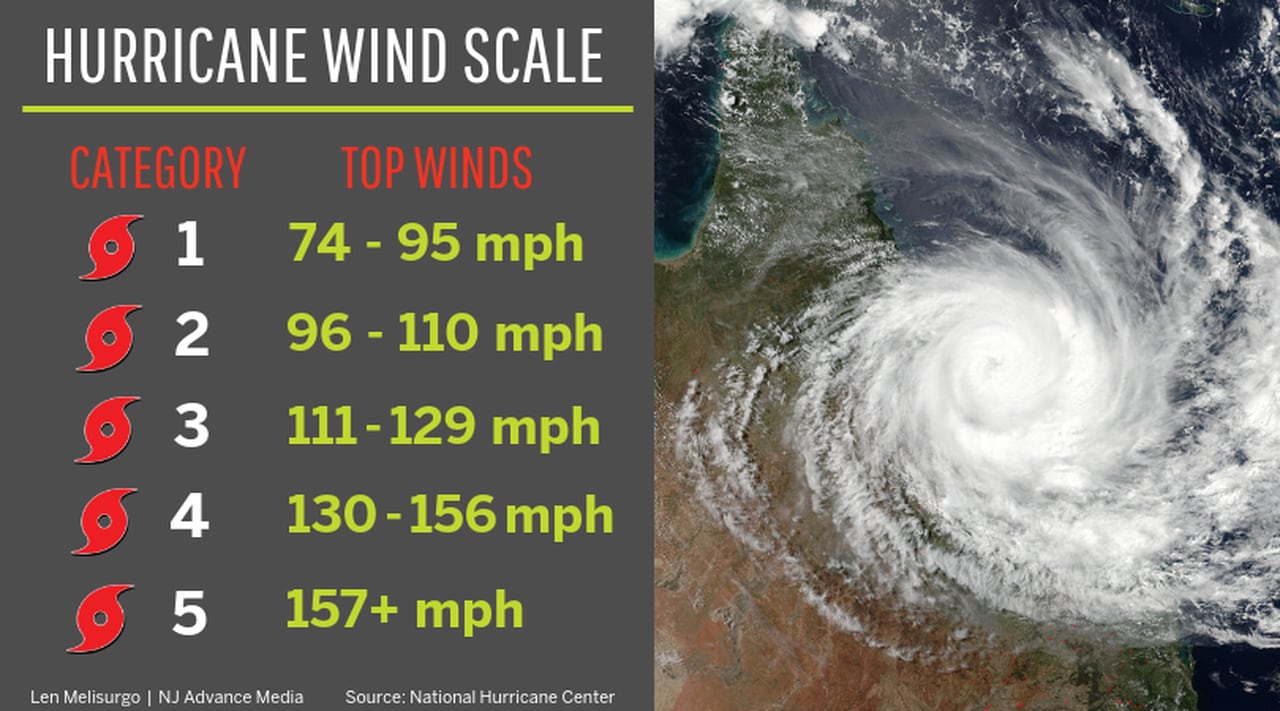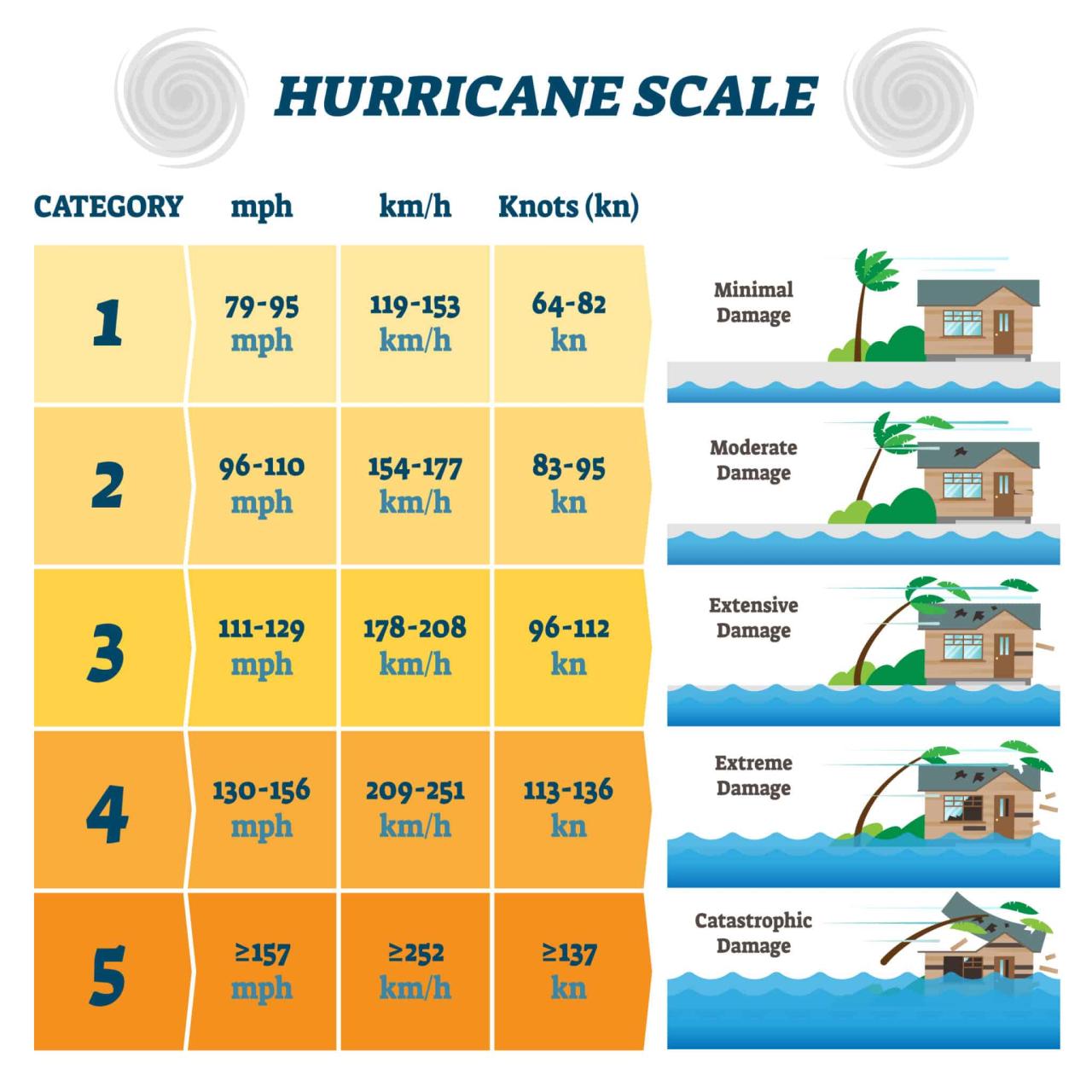Cat 4 hurricane wind speed, a force of nature that can unleash unimaginable destruction, leaving behind a trail of devastation. Join us as we delve into the heart of these powerful storms, exploring their devastating impacts, the science behind their formation, and the critical importance of preparedness.
As the Saffir-Simpson Hurricane Wind Scale categorizes Cat 4 hurricanes with sustained winds between 130 and 156 mph, these storms possess the potential to inflict catastrophic damage.
Understanding Hurricane Wind Speeds

Hurricanes are among the most powerful and destructive forces of nature. One of the key factors that determines the severity of a hurricane is its wind speed. The Saffir-Simpson Hurricane Wind Scale is a tool used to classify hurricanes based on their sustained wind speeds.
The Saffir-Simpson Hurricane Wind Scale
The Saffir-Simpson Hurricane Wind Scale was developed by Herbert Saffir and Robert Simpson in the 1970s. The scale classifies hurricanes into five categories, from Category 1 to Category 5, based on their sustained wind speeds.
| Category | Sustained Wind Speed (mph) |
|---|---|
| 1 | 74-95 |
| 2 | 96-110 |
| 3 | 111-129 |
| 4 | 130-156 |
| 5 | 157+ |
Relationship Between Wind Speed and Hurricane Intensity
The wind speed of a hurricane is directly related to its intensity. The higher the wind speed, the more intense the hurricane. Hurricanes with higher wind speeds are capable of causing more damage and destruction.
The Saffir-Simpson Hurricane Wind Scale is a valuable tool for predicting the potential impact of a hurricane. By understanding the wind speeds associated with each category of hurricane, emergency managers and the public can take appropriate precautions to stay safe.
Impacts of Cat 4 Hurricane Wind Speeds
Category 4 hurricanes unleash devastating winds capable of inflicting widespread destruction. Their sustained wind speeds, ranging from 130 to 156 mph, possess immense power, posing a severe threat to life and property.
The relentless force of these winds can cause catastrophic damage to buildings, homes, and infrastructure. Roofs can be torn off, windows shattered, and entire structures reduced to rubble. Trees are uprooted, power lines downed, and debris scattered across vast distances, creating hazardous conditions.
Impact on Buildings
Cat 4 hurricane winds can severely damage or destroy buildings, particularly those that are not well-constructed or adequately reinforced. The intense wind pressure can cause walls to collapse, roofs to buckle, and windows to shatter, exposing the interior to the elements.
Impact on Infrastructure
Infrastructure, such as power lines, communication towers, and bridges, is highly vulnerable to Cat 4 hurricane winds. The high winds can topple these structures, disrupting essential services and causing widespread power outages and communication breakdowns.
Impact on Natural Environment
Cat 4 hurricane winds can also have a devastating impact on the natural environment. The strong winds can strip trees of their leaves and branches, damage vegetation, and erode coastal areas, leading to habitat loss and ecosystem disruption.
Safety Precautions, Cat 4 hurricane wind speed
In the event of a Cat 4 hurricane, it is crucial to take immediate safety precautions to protect life and property. Residents in affected areas should evacuate to safe shelters, secure loose objects, and reinforce their homes as much as possible.
Forecasting and Tracking Cat 4 Hurricanes

Accurate forecasting and timely warnings are crucial for Cat 4 hurricane preparedness and response. Meteorologists use a combination of observations, data analysis, and computer modeling to predict the path and intensity of hurricanes.
Hurricane Structure and Wind Speed
A hurricane’s structure consists of a central eye, surrounded by concentric bands of thunderstorms and spiraling winds. The strongest winds are typically found in the eyewall, the area immediately surrounding the eye. Wind speed decreases with distance from the eye.
Meteorologists track hurricanes using a variety of tools, including:
- Weather satellites
- Radar
- Aircraft reconnaissance
- Buoys
Data from these sources is fed into computer models that generate forecasts of the hurricane’s path and intensity. These forecasts are constantly updated as new data becomes available.
Importance of Accurate Forecasting and Timely Warnings
Accurate forecasting and timely warnings are essential for minimizing the impact of Cat 4 hurricanes. They allow communities to evacuate, prepare for the storm, and take steps to protect property and lives.
Early warnings also give emergency responders time to mobilize and deploy resources to affected areas. This can help save lives and reduce the severity of damage.
Conclusion
Understanding Cat 4 hurricane wind speed is essential for safeguarding lives and property. By staying informed, taking necessary precautions, and respecting the power of these storms, we can mitigate their impact and emerge stronger in the face of nature’s fury.
Answers to Common Questions: Cat 4 Hurricane Wind Speed
How can I stay safe during a Cat 4 hurricane?
Follow evacuation orders, secure your home, have an emergency plan, and stay informed through official channels.
What are the signs of a Cat 4 hurricane approaching?
Strong winds, heavy rain, rising sea levels, and changes in atmospheric pressure are all potential indicators.
How do meteorologists forecast Cat 4 hurricanes?
Using advanced weather models, satellite imagery, and historical data, meteorologists can predict hurricane tracks and intensities.

